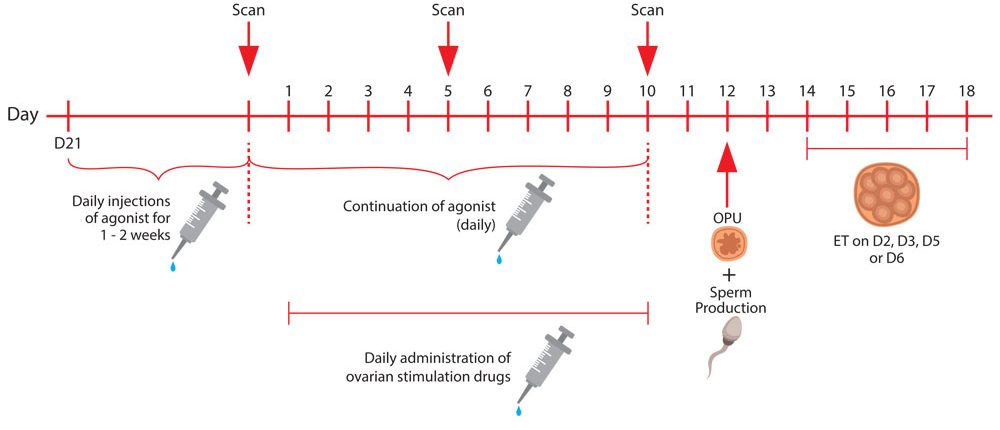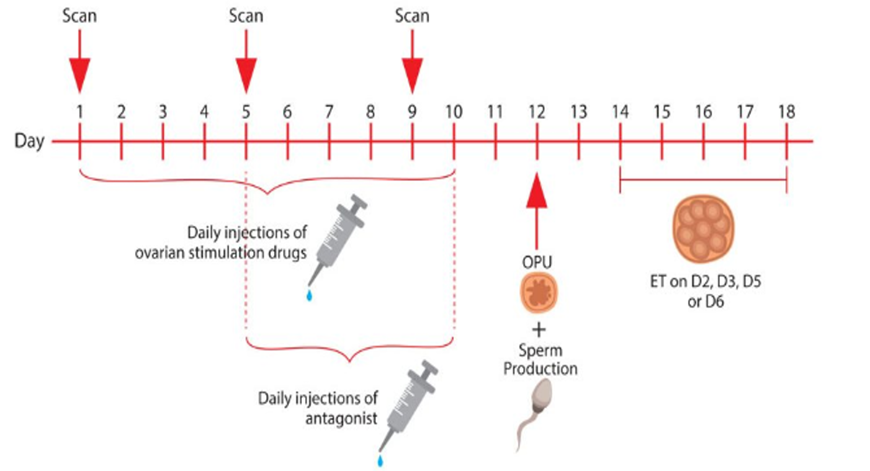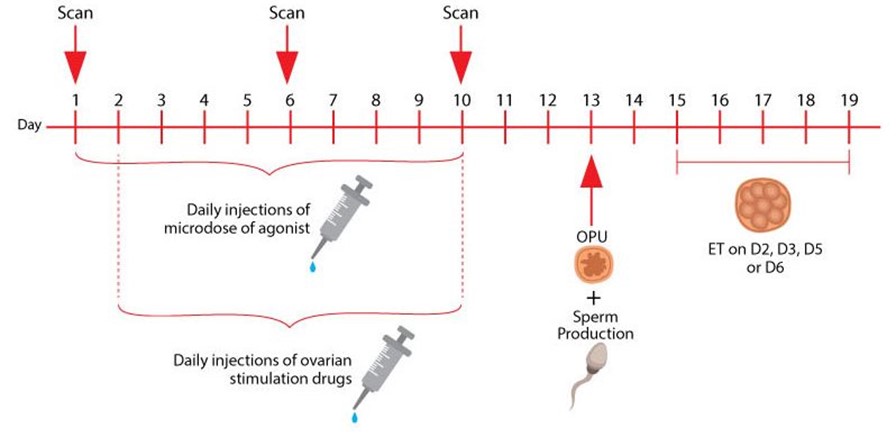The Long Down Regulation Protocol (LDR)
This is one of the protocols that is employed in Sunfert. The suppressive effects of the initial injections (busereline) seem to be beneficial for women with endometriosis which sometimes can be undiagnosed. Studies have shown that success rates with LDR protocol are marginally better than other protocols.

- First visit to the clinic is roughly about a week before the onset of your menses (usually Day 21 of your menstrual cycle).
- During this visit, you will undergo a scan to confirm that you have ovulated.
- Sometimes, your doctor may have given you some oral contraceptive pills (OCPs) from the beginning of your menstrual cycle (usually Day 2 or Day 3) and you commence injections on your own a few days before the last pill.
- The first type of injection is called Buserelin (Suprefact) and is given as a daily dose in the morning before you go about your usual daily activities.
Good to know:
- These injections are well tolerated, though sometimes the patient may have hot flushes.
- You will still have a menstrual period though it may be lighter or prolonged.
- After about 2 weeks of injections, you will be seen in the clinic for a repeat scan to confirm down regulation (ovaries that are quiet).
- The dose of Buserelin is subsequently reduced and approximately a week later, you will commence stimulation of the ovaries.
- This involves the use of a daily hormonal injection called FSH (Gonal F,Puregon or Menopur) for about 10 to 12 days.
- The LDR protocol takes about 4 weeks plus in total.
- A scan would be repeated on Day 5 of injections after which another injection called GnRH antagonist (Cetrotide or Orgalutran) is commenced.
- This injection which is also done daily prevents premature release of the eggs. In total you will do about 10 to 12 days of injections
The 'Short' GnRH Antagonist Protocol
This protocol is gaining prominence due to its shorter duration and is commonly employed in Sunfert. It is particularly useful in women with polycystic ovaries, as there is lower risk of ovarian hyperstimulation syndrome.
Your doctor may sometimes give you several days (up to 3 weeks) of OCPs from the onset of your menses. Then on the second or third day of your withdrawal menses after the pill, you commence the daily FSH injections immediately.

A scan would be repeated on Day 5 of injections after which another injection called GnRH (Cetrotide or Orgalutran) is commenced. This injection which is also done daily prevents premature release of the eggs. In total you will do about 10 or 12 days of injections.
The Microflare Protocol
This protocol is reserved for older women, women with low ovarian reserve or who have responded poorly with previous protocols.

This protocol involves a pre-treatment with OCPs and subsequently a low dose busereline injection from Day 2 of menses, which acts to flare up the ovaries. You will subsequently be commenced on daily FSH injections from Day 3 onwards. The entire treatment protocol takes about 10 to 12 days.
The Natural Cycle IVF
Women with regular cycles but low ovarian reserve can opt for natural cycle IVF. These women will also very likely produce one or two eggs on their own or with a low dose of FSH stimulation. These eggs are easier to harvest and more likely to be better in quality and subsequently develop into an embryo. The advantage of this cycle is a reduction in cost and improved patient tolerability.
During the period of stimulation, you are expected to visit the clinic about 3 times. You are advised to carry on with your usual routine of work or house duties to minimize your stress levels. All injections are self-administered for your convenience, and our fertility nurse will teach you how to perform the injections. It is important to keep the injections in the refrigerator to preserve their effectiveness.




